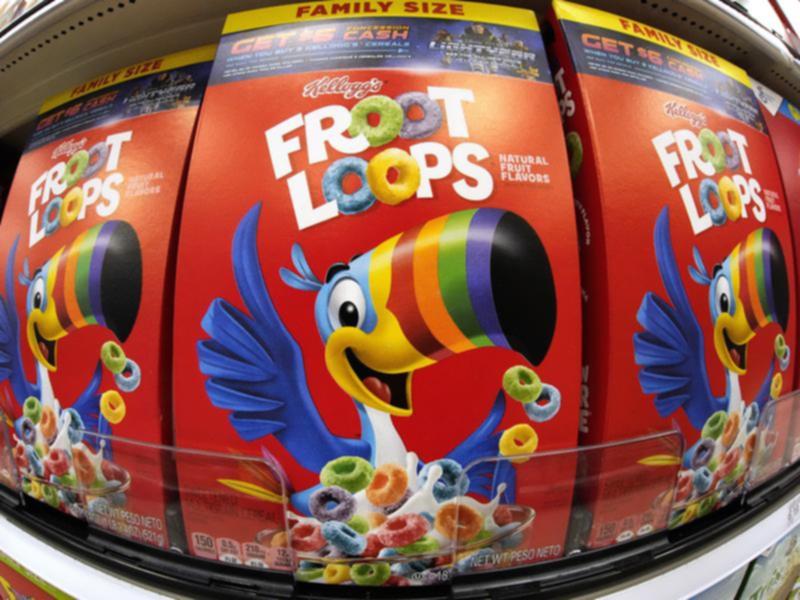Robert F. Kennedy Jr.’s new health agenda targets synthetic dyes and hidden dangers in America’s food supply

Robert F. Kennedy Jr.’s health department announced plans to phase out petroleum-based synthetic dyes from the nation’s food supply in a bid to ramp up pressure on an industry he has often derided.
The Department of Health and Human Services said it aims to work with the industry to eliminate six synthetic dyes, such as red dye No. 40 and yellow dye No. 5, from the food supply by the end of 2026.
“One by one, we’re going to get rid of every ingredient and additive in food that we can legally address,” Mr Kennedy said.
Sign up to The Nightly's newsletters.
Get the first look at the digital newspaper, curated daily stories and breaking headlines delivered to your inbox.
By continuing you agree to our Terms and Privacy Policy.Mr Kennedy, the nation’s top health official, made the announcement Tuesday afternoon, along with Marty Makary, the newly confirmed head of the Food and Drug Administration.
The move comes as Mr Kennedy has claimed that food makers have been allowed to “mass poison” American children. He has frequently blasted controversial food dyes that can be found in candy, cereals, drinks and snacks, and he has made cracking down on colour additives a top target of his “Make America Healthy Again” initiative to root out chronic disease and childhood illness.
When asked whether there was a formal agreement with the food companies on the phaseout, Mr Kennedy said, “We don’t have an agreement; we have an understanding.”
The goal, Mr Makary said, is for food companies to eliminate the dyes from products voluntarily. He said manufacturers “want to do it,” rather than contend with a patchwork of state laws.
“Let’s start in a friendly way and see if we can do this without any statutory or regulatory changes, but we are exploring every tool in the toolbox to make sure this gets done very quickly,” Mr Makary said.

It was not immediately clear whether all food companies would adhere to the ask. The dairy industry said it would voluntarily work to remove such dyes, while the colour additive industry stood by the safety of the dyes.
“Consumer Brands has long asked HHS and FDA to reestablish themselves as the country’s leading regulatory authority and we appreciate that the administration has reasserted their leadership in response to the myriad of state activity in the food regulation space,” Melissa Hockstad, the chief executive of Consumer Brands Association, a food industry trade group, said in a statement.
“A state patchwork of differing laws creates confusion for consumers, limits access to everyday goods, deters innovation, and increases costs at the grocery store.”
The FDA announced several other measures aimed at phasing out the dyes, such as establishing a national standard and timeline for the food industry to transition from the synthetic dyes to natural alternatives.
The agency will also fast-track the review of some natural alternatives to synthetic food dyes, such as butterfly pea flower extract, while authorising four new natural colour additives in the next several weeks. In the coming months, the agency will initiate the process of revoking authorisation for two synthetic food colourings: citrus red No. 2 and orange B.
“It’s encouraging to see the FDA working toward a ban on synthetic food dyes, but it’s clear that phasing them out will involve a multi-step process that will take a long time to accomplish,” said Brian Ronholm, director of food policy at Consumer Reports. He said states should continue to pass their own bills aimed at removing dyes from the food supply.
Mr Kennedy’s food efforts have won the backing of some nutrition experts and consumer advocates, even as they have expressed alarm over his purge of the federal health workforce and his response to a measles outbreak. But some think Mr Kennedy is missing an opportunity to focus on curbing some of the major drivers of chronic diseases, such as tobacco and alcohol use.
“Food dyes are an important cause of morbidity, but I don’t think they are, by a long shot, the largest causes of chronic disease in this country,” said Peter Lurie, president of the Centre for Science in the Public Interest, a nonprofit that has warned about the drawbacks of food dyes and opposed Mr Kennedy’s nomination to lead HHS. Mr Lurie was a top FDA official in the Obama administration.
Mr Makary acknowledged that the move would not singularly reverse the prevalence of chronic diseases in the United States.
“There’s no one ingredient that accounts for the childhood chronic disease epidemic,” Mr Makary said.
“And let’s be honest, taking petroleum-based food dyes out of the food supply is not a silver bullet that will instantly make America’s children healthy. But it is one important step.”
Last month, Mr Kennedy met with prominent food executives, including officials from Tyson Foods, General Mills, Kraft Heinz and the Consumer Brands Association.
During the meeting, he expressed a “strong desire” to remove synthetic colour additives from the food supply - “and he wants this done before he leaves office,” Ms Hockstad, the chief executive of the Consumer Brands Association, wrote in a message to industry leaders at the time.
Ahead of Mr Kennedy’s news conference on Tuesday, the International Dairy Foods Association announced a voluntary commitment to eliminate the use of certified artificial colours in milk, cheese and yogurts sold in the national school lunch and breakfast programs by July 2026.

What does science say?
Some consumer advocacy groups have said there is enough evidence to show that food dyes may cause some harm to children, arguing that some studies have connected artificial dyes to negative behavioural problems.
They have pointed to a 2021 review of seven food dyes - such as red dye No. 3, red dye No. 40 and yellow dye No. 5 - performed by the California Office of Environmental Health Hazard Assessment.
The review concluded that the consumption of some food dyes can result in hyperactivity and other neurobehavioral problems in some children, though sensitivity varies.
The FDA has previously said the agency will examine the potential effects of colour additives on children’s behaviour. The “totality of scientific evidence” indicates that most children have no adverse effects when consuming the dyes, but some evidence suggests that certain children may be sensitive to them, it said.
The evidence is “complicated,” said Marion Nestle, an emeritus professor of nutrition, food studies and public health at New York University. She pointed to the California report as likely the “strongest review that’s available.”
“The FDA for years has said these things are safe at the amounts currently consumed. Other people say no,” Ms Nestle said.
“These dyes are unnecessary. If there’s any question at all about whether they might be harmful, let’s get rid of them.”
The International Association of Colour Manufacturers, which represents the colour additives industry, said colour additives have been “rigorously reviewed” and are “essential for consistency, visual appeal, and consumer trust in food products.”
“Requiring reformulation by the end of 2026 ignores scientific evidence and underestimates the complexity of food production,” the group said in a statement.
“This process is neither simple nor immediate, and the resulting supply disruptions will limit access to familiar, affordable grocery items.”
The FDA has faced pressure to crack down on some food dyes from Republican and Democratic lawmakers, and food safety advocates have said it takes far too long for the agency to reassess chemicals prevalent on store shelves.
The agency made a move to get rid of one such dye this year. In the waning days of the Biden administration, the FDA banned red dye No. 3, a controversial bright red dye used in drinks and snacks that has been linked to cancer in animals.
The agency maintained no evidence that ingesting the colouring causes cancer in humans, but said its decision was based on a federal law prohibiting additives found to cause cancer in humans or animals at any dose.
Red dye No. 3 must be removed from food by mid-January 2027 and excised from ingested drugs in 2028. On Tuesday, the FDA said it would request that food companies remove the dye sooner.
The issue has also been percolating at the state level, prompting some prominent manufacturers to already begin to remove dyes from popular items.
In 2023, California passed a law prohibiting food from being sold in the state if it contains red dye No. 3, brominated vegetable oil and other additives. The issue has gained traction in state legislatures across the country this year, such as in West Virginia, where the Republican governor signed sweeping legislation last month banning foods containing seven dyes from being served in school nutrition programs this August and from being sold in the state starting in 2028.
Maegan Vazquez contributed to this report.
© 2025 , The Washington Post
